The Games That Defined The Atari 2600
It's one of the most important home consoles ever made, and these are the games that helped define the Atari 2600.
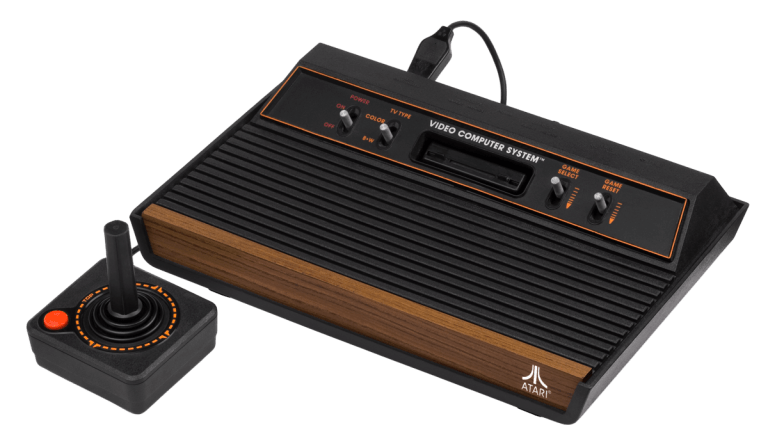
Released in 1977, the Atari 2600 was among the second generation of video game consoles and was hugely influenced by the arcade era. Originally called the Video Computer System, it would go on to be renamed, with the Atari 2600 still getting held in high regard as a massively important platform in video game history.
While its name is iconic, many of the games that were featured on the platform are even more famous. They defined the legacy of the Atari 2600, regardless of whether they were exclusives, originals, ports or part of a larger series. Whether it was the depth of their sales, the way they pushed the platform’s technology, or how they have become synonymous with the console, these games made the Atari 2600 what it is today.
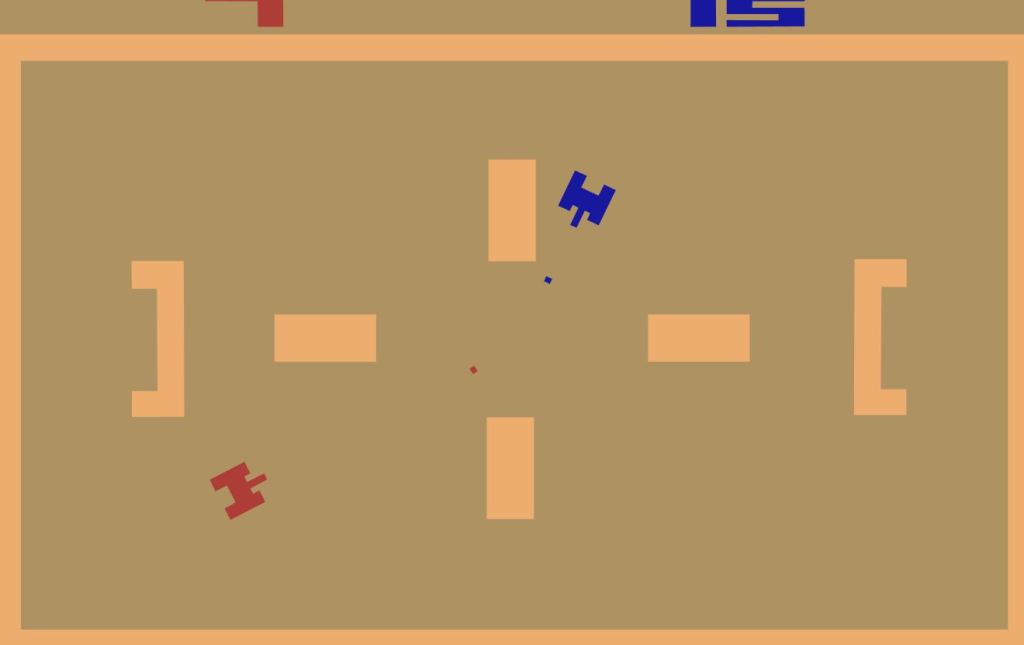
Combat (1977)
Developed & published by Atari
Combat was one of the many titles that Atari developed for its own console system, making it an exclusive to the Atari 2600. In fact, the game was being produced before the platform had even been released and thus it was a vital part of the launch of the Atari 2600.
It was loosely based on the arcade game Tank which was also produced by the studio. It was a simple title to master, with two players controlling separate tanks and scoring points when they landed an attack on one another. The 2D title might seem graphically and mechanically limited these days, but it didn’t need to be complex to be fun. Not only is it still a nostalgic entry into Atari’s library, but it’s a gorgeous example of some of the strengths of the console. The game took advantage of basic systems, allowing rockets to cascade off of the ever-changing array of walls, thus inviting players to think tactically about their attacks. Combat demonstrates that even some of the earliest and most limited Atari 2600 titles still delivered in style.

Space Invaders (1980)
Developed by Taito & published by Atari
Space Invaders is, of course, not an Atari 2600 exclusive, nor did it debut on the platform. The arcade game was massively popular and a huge win for developer Taito. It made sense to try and port the title to home systems and Atari Inc. were the first to get that opportunity.
Space Invaders quadrupled the Atari 2600’s sales and was the first licensed game to make its way from arcade to consoles. It’s a massive stepping stone in Atari’s history, but among those sales accolades, the quality of the game itself cannot be overlooked. Inventive, fun, and endlessly challenging, Space Invaders represented everything great about retro video gaming. With the player controlling a laser canon that fired back against the oncoming alien army, the shoot em’ up became instantly iconic. Although the competition aspect of Space Invaders was lost as it had moved from the communal experience of arcade gaming, the Atari 2600 version made the title so much more accessible. Suddenly, that famous sound design could be heard in any home across the country.

Adventure (1980)
Developed & published by Atari
Adventure went through a complex development process which was partially impacted by the limitations of the Atari 2600 console. In theory, the game should have been a dud upon its release. Yet, critically it received praise across the board for its ease of gameplay and engaging mechanics. Although when compared to some of the other titles released at the time Adventure didn’t quite hold up, it nonetheless showed a lot of potential for the future.
Indeed, Adventure, which sees players hunting around a kingdom searching for an Enchanted Chalice, managed to combine the traits of its genre with fun puzzle elements. There are obviously many areas where Adventure could be improved; for instance, the player character is just a simple square! Yet, the vision was certainly there. Adventure indicated that unique choices could be made to marry the gameplay to the thematic narrative. It shattered many conventions and broke the mold, moving players away from traditional scoreboards and social competition.
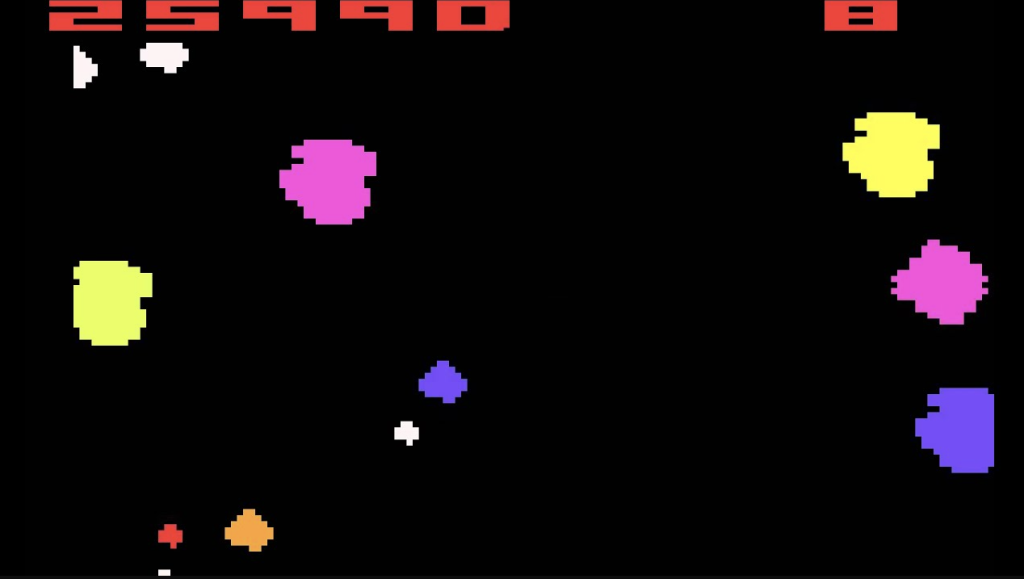
Asteroids (1981)
Developed & published by Atari
Asteroids was one of the early great hits of the arcade era and it was a natural jump for Atari, who had developed the arcade game, to bring the experience to its own home console. With Space Invaders already proving that arcade ports really connected with audiences, it was no surprise when Asteroids also performed remarkably well.
For many, the Atari 2600 would have provided a first-time experience with Asteroids, and players flocked to stores to contribute to the unbelievably high sales. The concept behind Asteroids remained the same. Players were tasked with destroying the lumps of cosmic rock and flying saucers, in the multi-directional shooter. Although there have been remakes and sequels, nothing quite lands like the original gem. Atari’s ownership over Asteroids allowed it to position the game as a defining one for its consoles, and it would later appear on the likes of the Atari 7800 after the arcade and 2600 versions had created a loving nostalgia.
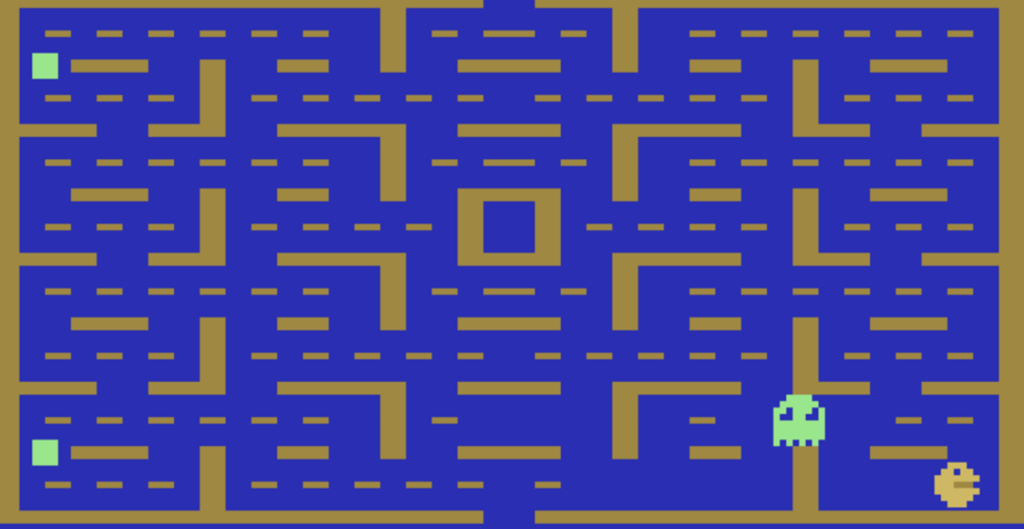
Pac-Man (1982)
Developed by NAMCO & published by Midway
With arcade ports becoming the bread and butter of Atari 2600’s profile, Atari Inc. had to go for the heavy hitters. What better way to make an impact with a home entertainment system than with Pac-Man, NAMCO’s timeless title which had already built up a firm fanbase on arcade.
Needless to say, Pac-Man’s launch on Atari 2600 led to record sales and it is still the highest-selling game on that platform of all time. It seemed as if people wanted the Atari 2600 purely to play the dynamic maze action title. Just like the arcade iteration players controlled the titular Pac-Man as he collected coins and cherries while avoiding the dastardly and cleverly programmed ghosts. Each character was given a real sense of voice and personality, which is rare in this style of game. That identity which Pac-Man built, opened the doors for further spinoffs on the Atari, with audiences just as keenly interested in 1983’s Ms. Pac-Man which also made the jump from arcade. Perhaps Pac-Man’s longevity would not be nearly as prevalent had the title not been taken directly to consumers by Atari.
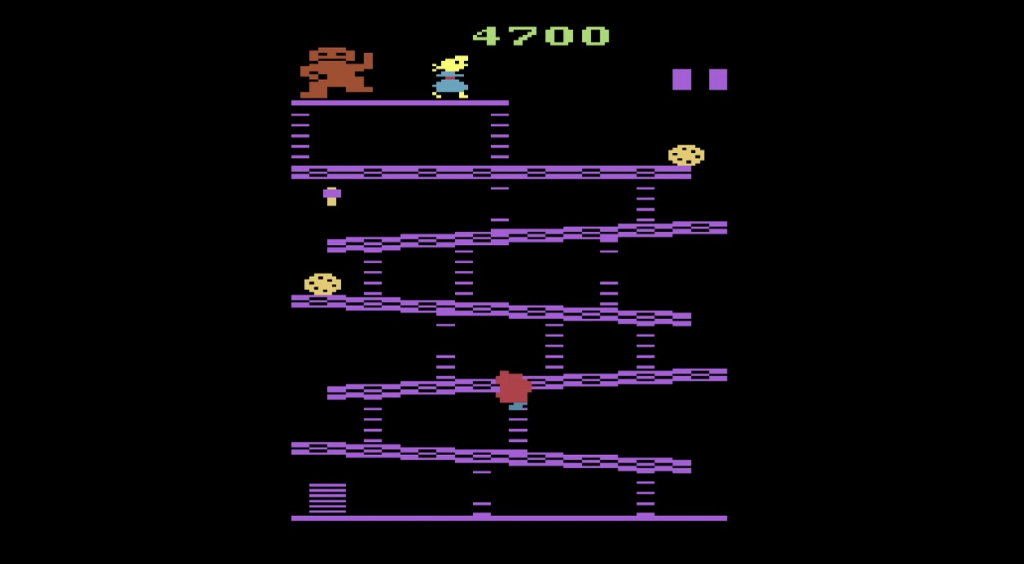
Donkey Kong (1982)
Developed & published by Nintendo & Coleco
Donkey Kong is an arcade heavyweight that built an empire. Without it, Nintendo would not have the Mario series and all the other titles that have come from that world. Although fans might associate the title more with Nintendo’s own platforms, the Atari 2600 did host its own port of the game, albeit a limited one.
With two levels removed due to the limitations of the console’s cartridges, it would be fair to call this port a lesser version of the game. But the power of the Atari shone through. With fans already invested in the console, Donkey Kong ended up becoming the second biggest seller for the Atari 2600. With players controlling a prototype Mario as he ascends a challenging obstacle course while avoiding the titular gorilla’s barrel attacks, it was the replayability of the title that encouraged audiences to keep coming back for more. Atari 2600’s initial days were highly influenced by arcade ports, but there were other avenues the console began to explore.
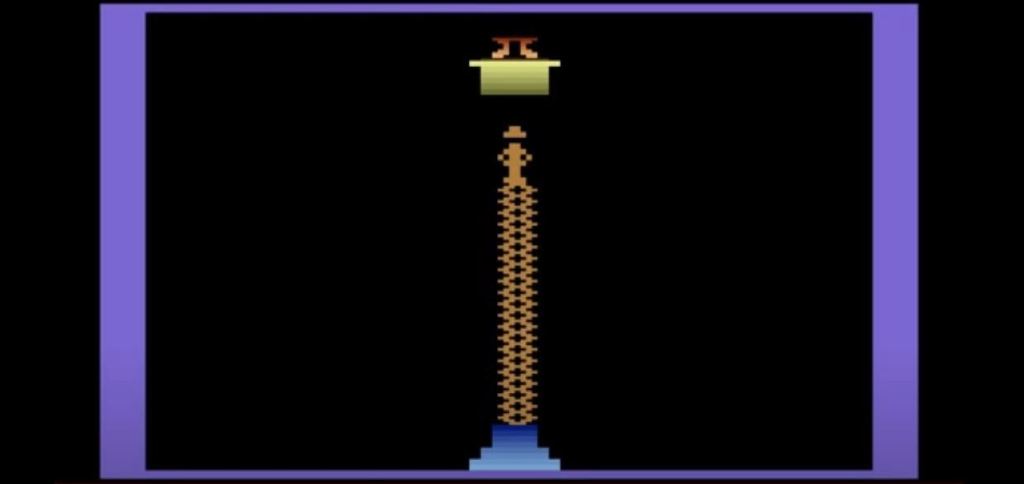
Raiders of the Lost Ark (1982)
Developed & published by Atari
Licensing was becoming a major part of the video game industry and cinematic adaptations were a natural next step for Atari. While there were plenty of arcade games that adapted iconic movies, Atari managed to land an exclusive for the 2600. In a partnership with LucasFilm they created an adaptation of Raiders of the Lost Ark.
The game sold remarkably well, driven by the prominence of the brand and the fact that it couldn’t be played anywhere else. Atari cemented its reputation as a trusted developer for the distribution and protection of major cinematic series on home consoles. Raiders of the Lost Ark captured the magic of the movies, pitching players as Indy himself as he searches for the titular ark, facing down snakes and overcoming simplistic puzzles. These days it’s an almost laughable rendition of the series, but back then it was a way for fans to interact with the character in a unique way. Nothing can beat the iconic Indiana Jones theme in all of its retro glory and indeed many Atari 2600 owners will probably still associate the console with that soundtrack.
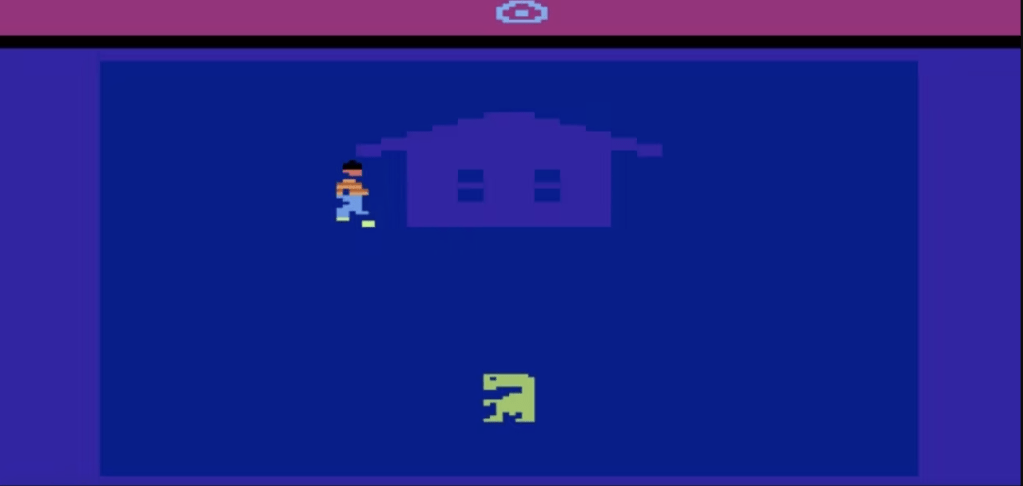
E.T. The Extra-Terrestrial (1982)
Developed & published by Atari
Atari could clearly smell money in the potential for movie licensing opportunities and Raiders therefore wasn’t the only franchise the company pitched for. They also developed E.T. The Extra Terrestrial for the 2600 console: another exclusive which is still commonly associated with the platform decades on from its release.
Although the reception to E.T. was frosty, with many finding the title to be one-dimensional, that didn’t stop it from entering the ranks of the top 10 biggest-selling titles for Atari. Mechanically it took no major strides forward, and this led to some consumers actually returning their copies. Despite the numbers it sold, the performance was still below expectations and negatively affected Atari. In fact, the company almost went into crisis, with E.T. acting as a major wake-up call and a lesson for future titles. Clearly, despite a well-known name, Atari couldn’t get lazy with its game development. Having players simply run around as the titular alien, looking for telephone pieces, just wasn’t compelling enough.
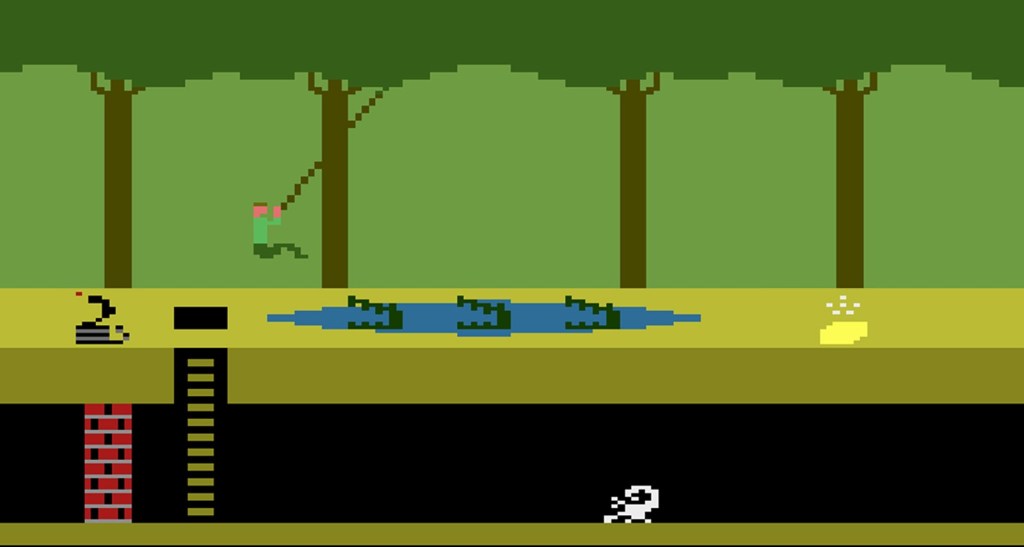
Pitfall! (1982)
Developed & published by Activision
Although many of the most successful games on Atari 2600 were based on arcade titles or movie franchises, there was at least one original game developed for the console that astronomically took off. In fact, it was so popular through word of mouth that its sales continued to build and build, overtaking beloved franchises like Raiders of the Lost Ark.
That game was Pitfall!, which demonstrated that sheer quality genuinely was enough in this new console landscape to capture the audience’s attention. The platformer was set in a jungle and players controlled the explorer Pitfall Harry as he made his way through the dangerous terrain. Players had to hop over crocodiles, avoid rolling barrels, swing across vines, and fend off snakes in an imaginative action adventure. It began to raise the bar with players coming to expect more from console titles thanks to its fast-paced and constantly compelling gameplay. Its sound design might have been simple, but graphically this was genuinely advanced. Pitfall!’s legacy and many sequels is a sure sign of its impact for the Atari 2600.
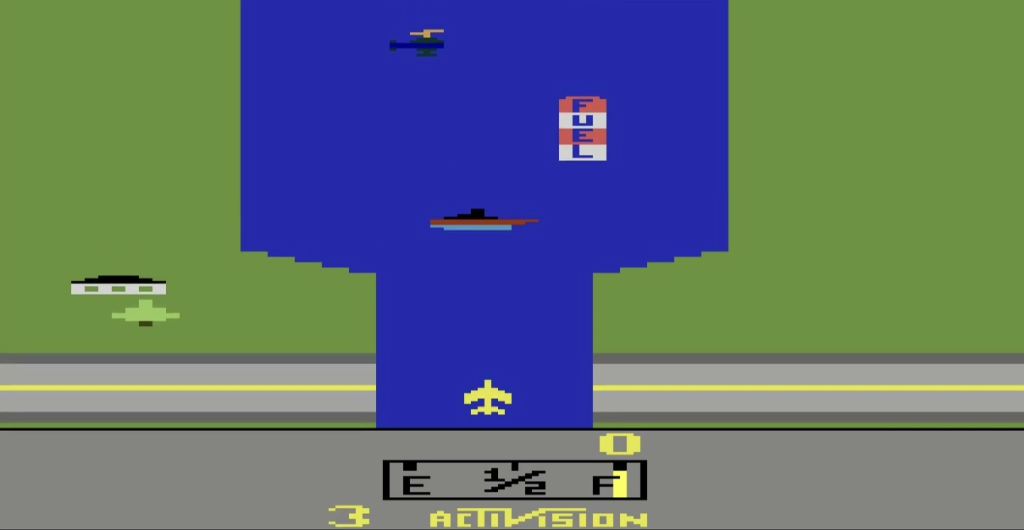
River Raid (1982)
Developed & published by Activision
River Raid was an exciting concept from the get-go, with players launching into an aircraft and shooting their way along the titular river. The shoot ‘em up wasn’t an Atari 2600 exclusive as the game’s popularity led to re-releases on later Atari consoles like the 5200.
What set River Raid apart was the smoothness of the transitions between each level and the complexity of the gameplay itself. River Raid gave players a genuine challenge to overcome, which grew and evolved as the game progressed. But, the controls themselves never got in the way, with River Raid playing with such dexterity and precision that players could apply genuine tactics to the way they maneuvered. It wasn’t without its flaws, but River Raid became a best-seller rather quickly and helped to define the Atari 2600 as a console that was pushing the limits of the possibilities within gameplay. This was less about the narrative or building a franchise and more about seeing what the console could really do.
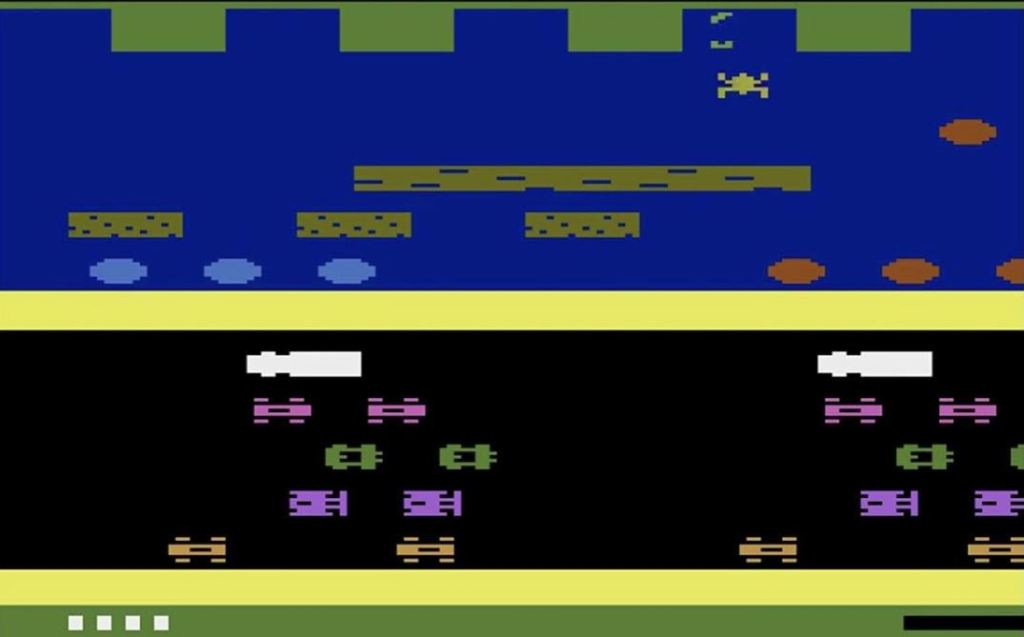
Frogger (1982)
Developed by Konami & published by SEGA
Atari’s ties to the arcade world continued with yet another classic. Trying to define itself as the console that brought beloved arcade games into the home, the Atari 2600 took on Frogger. Although it was never a console exclusive, it was still a chart-topper for the console and a fascinating look at how good Atari had gotten at porting games. Frogger is so universal in its appeal and that led to multiple versions hitting the 2600.
The game always stuck to its roots with players guiding their amphibious protagonists across a dangerous road, hoping to reach the safety of the houses on the other side. The timelessness of Frogger means it’s still a hit today and although many might associate it with arcade cabinets there will be a portion of the fanbase that still remembers maneuvering their frogs with the gorgeously designed Atari 2600 joystick. The graphics really popped on the console, and the smoothness of the gameplay made it pretty addictive.
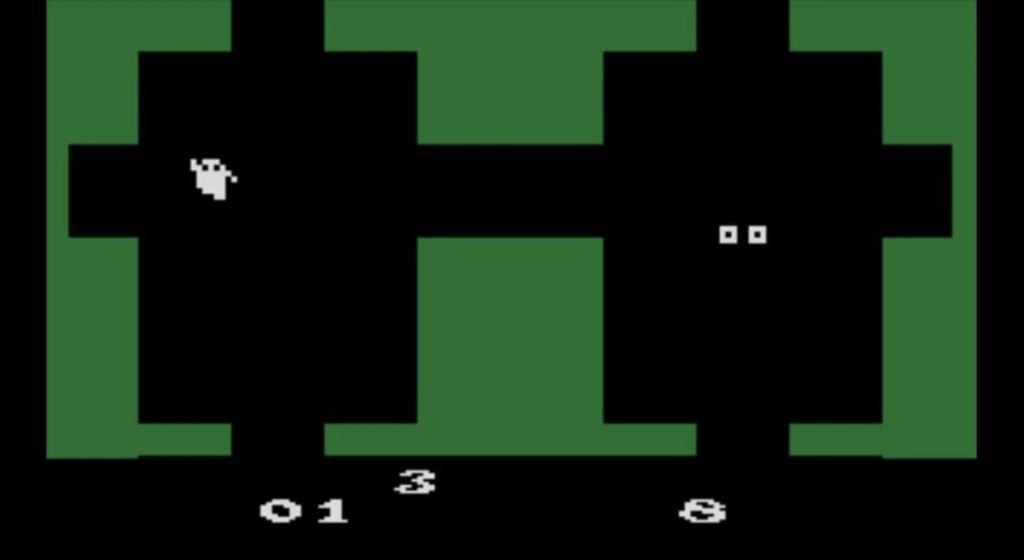
Haunted House (1982)
Developed & published by Atari
Another Atari 2600 exclusive which came to define what the console was all about, Haunted House pushed boundaries and became a standout in the horror genre for its time period. It might not have the same legacy surrounding its name as other games here, but its contributions to the industry as a survival title in particular are outstanding.
The single-player title asked players to move through the titular mansion and find pieces of a magical urn. The difficulty settings were a very personal touch, with 9 varieties allowing the player to tailor the experience to them. It was a surprisingly immersive game considering the technological limitations and although Haunted House didn’t have the sales of other games here, it did enjoy a good critical response. Follow-ups may have expanded upon the rudimentary early design, but there’s something quite wonderful about the ambition of the original. The way it hid enemies from the player until the last minute to spark tension and a few frights was masterfully done and spoke to the attention to detail Atari 2600 games could boast.
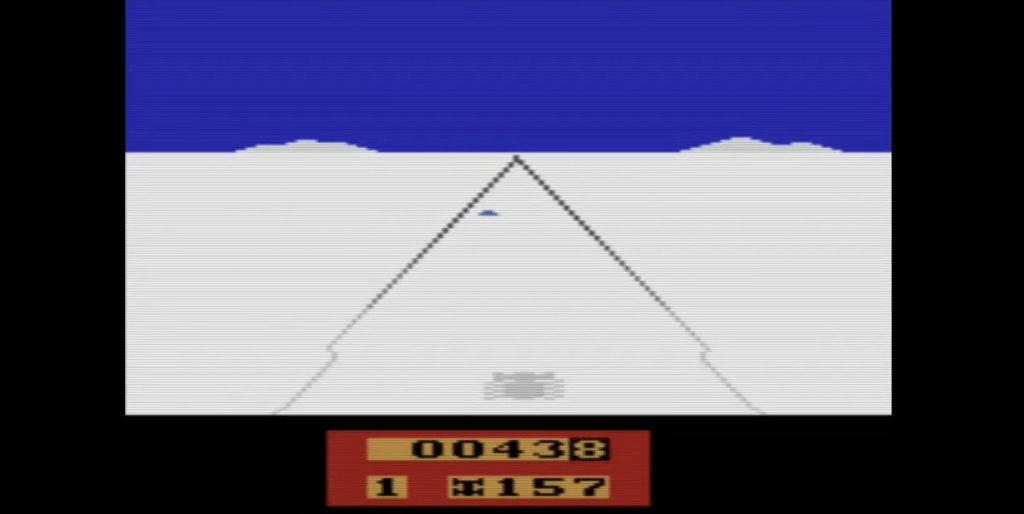
Enduro (1983)
Developed & published by Activision
The Atari 2600 had built up a strong catalog of titles by 1983, but it still needed to widen its range of genres. Racing titles had always been popular, although hadn’t always translated well to home consoles, considering arcade cabinets could feature various steering wheel gimmicks as part of their mechanics.
Enduro, which was released on the 2600 and ZX Spectrum, was a significant win for Atari. Enduro was superior to other racing titles at the time, with an impressive control system that was both fast-paced and responsive. Enduro was never going to be a financial success and doesn’t compare monetarily to other titles here. Still, the ways it influenced other racing games on the Atari 2600 ensures that it defined the console in its own unique way. Perhaps the most underrated element of the game was its sound design which was as realistic and deep as it was immersive.
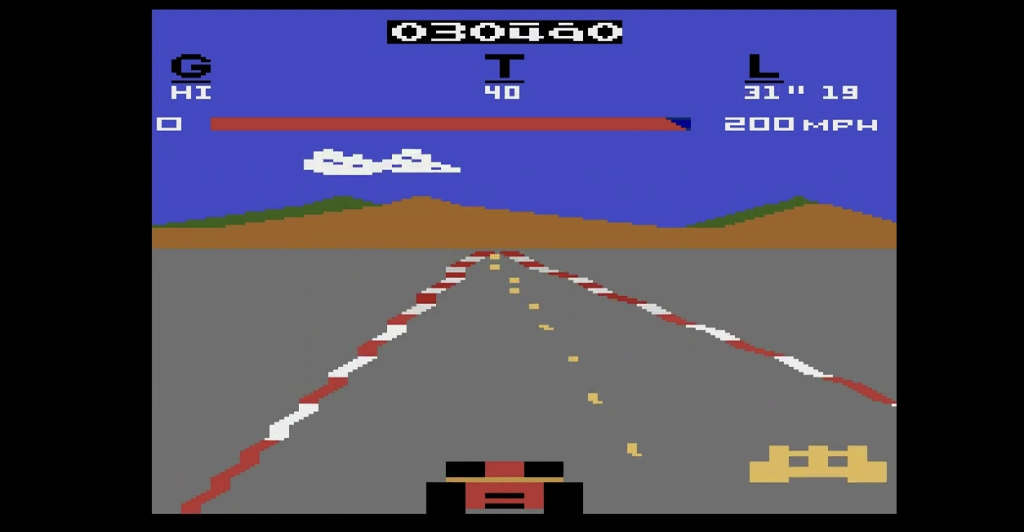
Pole Position (1983)
Developed by Namco & published by Atari
Some games are influential regardless of their attachment to the Atari 2600 and Pole Position is one of them. The racing game was a best seller and had already dominated the arcade space. As one of the best entries into the genre, it was no surprise that Atari crafted a deal with Namco to bring Pole Position to the Atari 2600.
It is undoubtedly one of the best titles on the console. With an animated show and plenty of spinoffs spawning from the initial game, Pole Position truly turned into a franchise that Atari could proudly allow to define its console. Graphically, the game was head and shoulders above its competition and the smoothness of the gameplay cannot be understated. Much like sim driving titles today, Pole Position opted for realism, asking players to complete a qualifying lap and placing them on real-life Formula 1 tracks. It was this attention to detail that showcased that the Atari 2600 was also home to serious gaming.
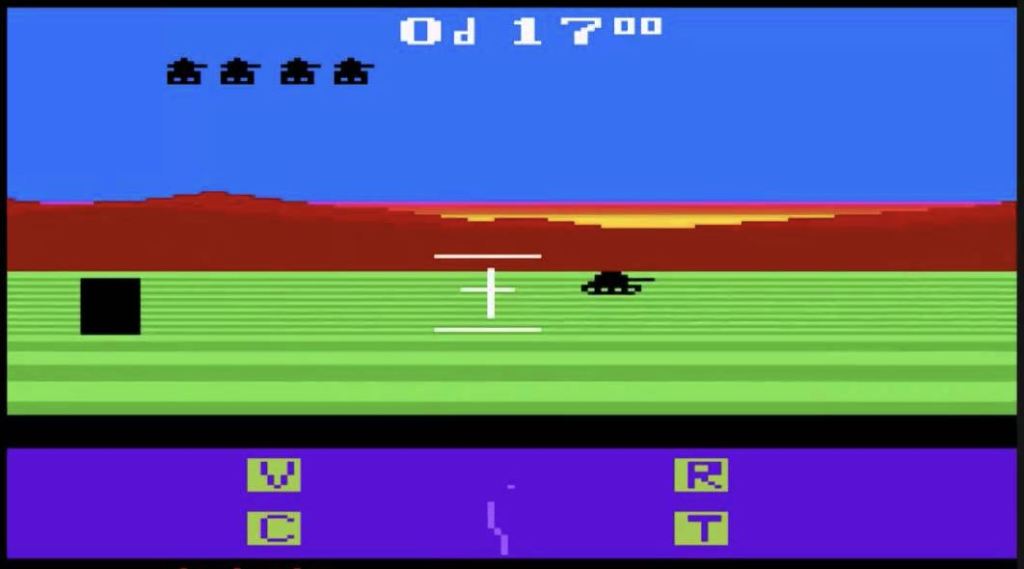
Robot Tank (1983)
Developed & published by Activision
An Atari exclusive which seems to have lived and died with its console, Robot Tank was a hidden gem among the 2600’s archives. It was bold and brash and incorporated a range of often unseen systems that elevated the game further. Players controlled their titular tank and attacked and defended in equal measure. But the way the tank got damaged was far more methodical, with the player having to protect specific components on their vehicle. What’s more, a realistic weather system and a sonar system which was integral during darker scenes, gave the game a sim-like gravitas. Robot Tank was by no means the most popular title on the Atari 2600, but its contributions to the console, with its dedication to delivering meaningful gameplay mechanics, had a genuine knock-on effect throughout the industry as a whole. Robot Tank received rave reviews at the time of its release and is arguably a superior version of Atari’s own Battlezone.
